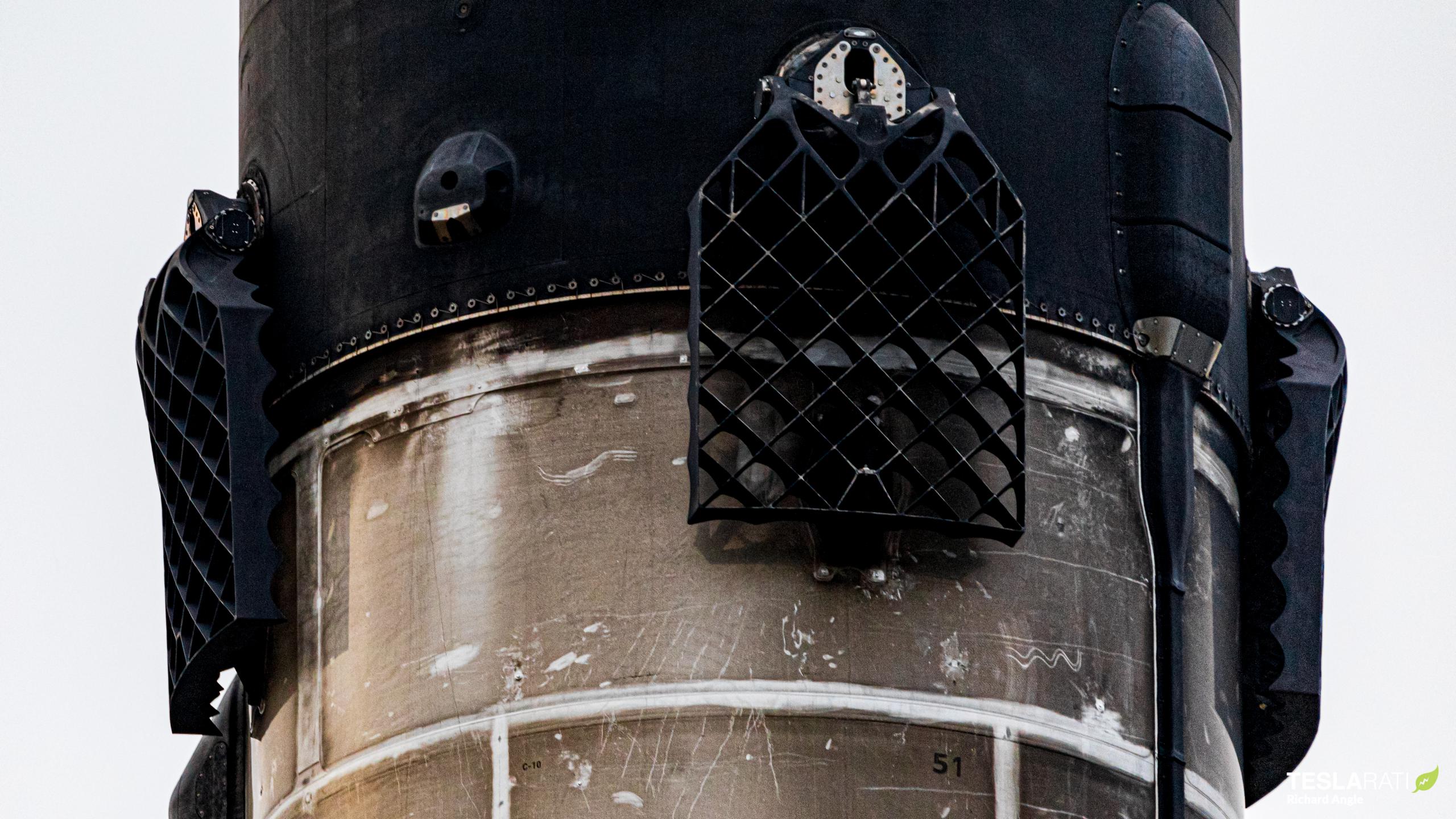
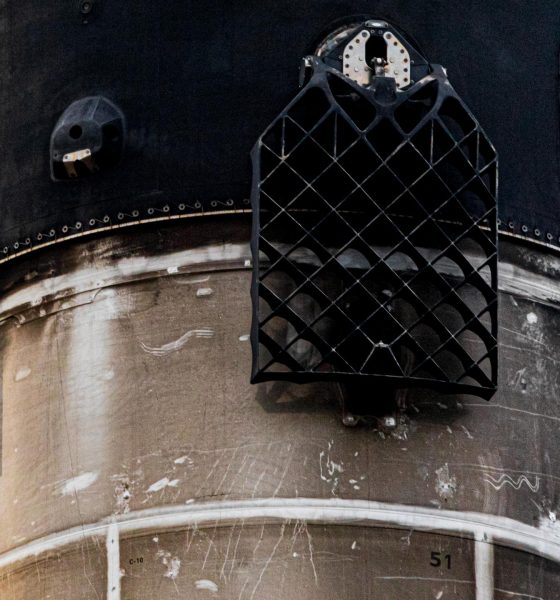
News
SpaceX go for third Starlink in one month as rare six-flight booster returns to port
SpaceX has confirmed that it’s on track to attempt the third Starlink launch this month at the same time as the last Starlink mission’s rare six-flight Falcon 9 booster sailed into port.
A few hours after Falcon 9 booster B1051 arrived back at Port Canaveral aboard drone ship Of Course I Still Love You (OCISLY), SpaceX announced via Twitter that it would launch another batch of 60 Starlink satellites no earlier than (NET) 12:14 pm EDT (16:14 UTC) Thursday, October 22nd. A ~24-hour delay from an earlier October 21st target, Starlink V1 L14 (Starlink-14) is still scheduled to launch just four days after Starlink-13.
Additionally, a 24-hour delay retains that possibility that Falcon 9 booster B1060 – assigned to Starlink-14 – will still break SpaceX’s (and thus the world’s) turnaround record for an orbital-class reusable rocket.
Back in Port Canaveral, Falcon 9 booster B1051’s safe return to port marks a significant milestone, proving (while wholly unsurprising, at this point) that Falcon 9 B1049’s successful sixth launch and landing was not a simple fluke. More importantly, much like B1049’s historic sixth flight came just 75 days after its fifth, Falcon 9 B1051 also spent a brief 72 days between flights 5 and 6 – technically making it the fifth-fastest booster turnaround in SpaceX history.
In other words, five-flight boosters don’t necessarily need more inspection or refurbishment, even if the first nth flight of any booster likely necessitates exceptionally care to document its condition and ensure that the rocket’s systems are still performing as expected. In fact, Falcon 9 booster B1049 was recently spotted – apparently in temporary storage – outside Pad 39A, seemingly implying that the rocket has already been made ready for its seventh launch less than 60 days after launch #6.
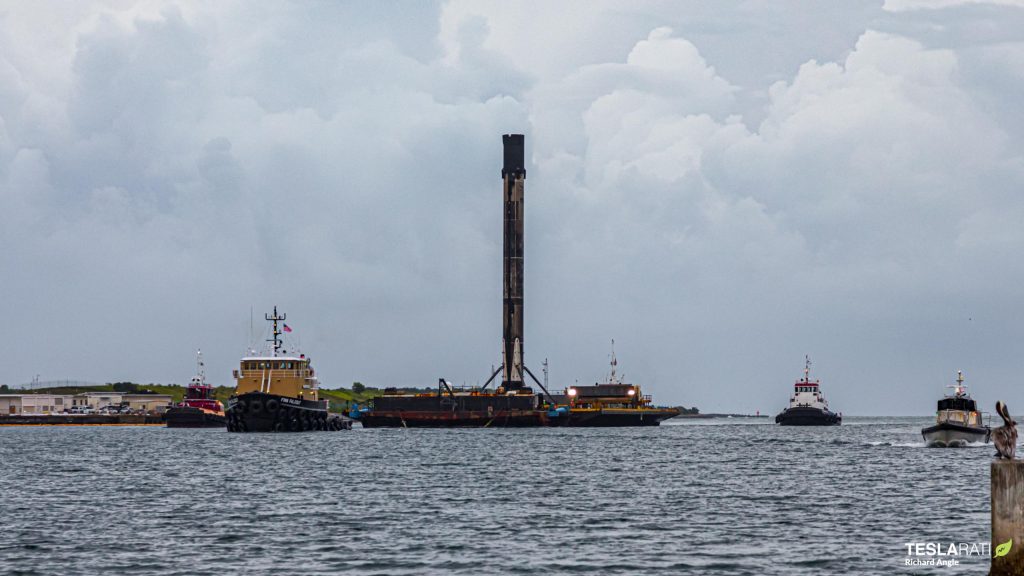
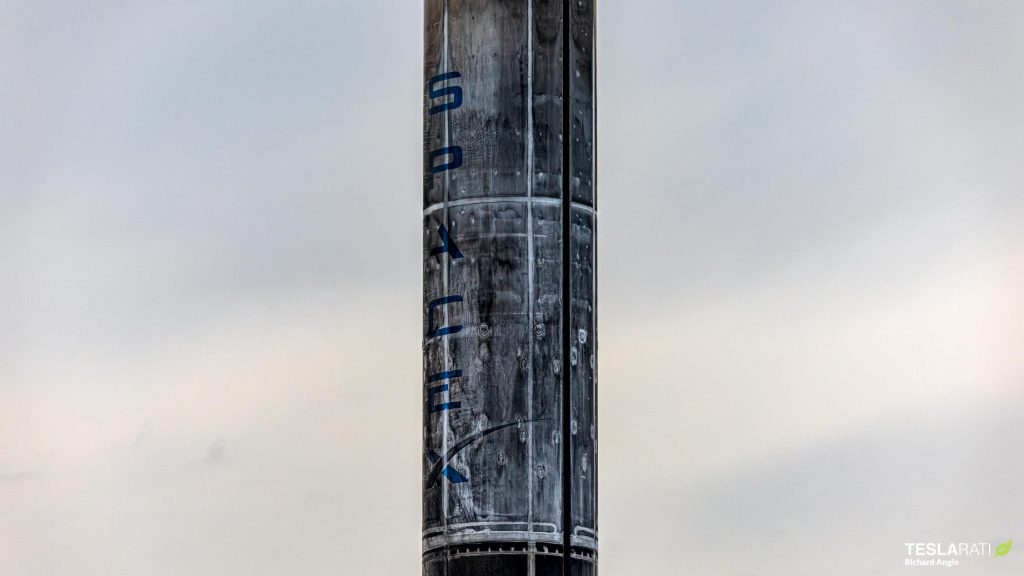
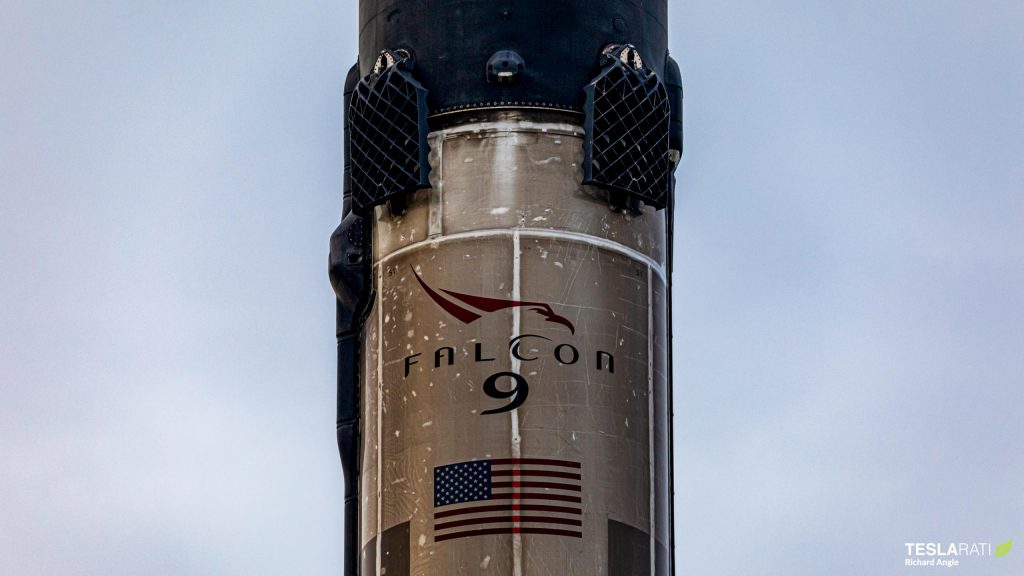
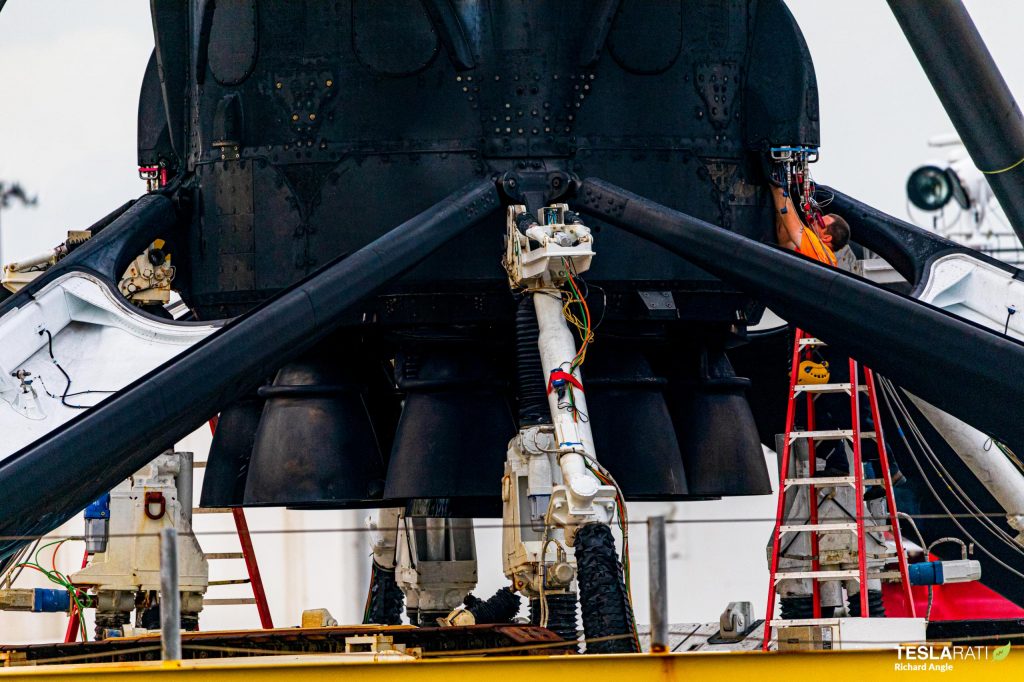
After Starlink-13, SpaceX’s fleet of five flight-proven Falcon 9 boosters has a current average of 4.2 flights per booster – almost inconceivable just two or three years ago. While Starlink-14 wont break or tie any nth-reuse records, Falcon 9 B1060 – now onto its third flight – is currently scheduled to launch just 49 days after its second launch and landing on September 3rd. In July 2020, SpaceX broke the world record for orbital-class rocket turnaround when Falcon 9 booster B1058 launched for the second time in just 51 days, breaking the previous 54-day record held for more than 35 years by NASA’s Space Shuttle.
If successful and barring more than a 24-hour delay, Falcon 9 booster B1060 is on track to steal booster B1058’s crown – what was once a rarity now likely to become a regular occurrence as SpaceX continues to explore the limits of booster reusability.
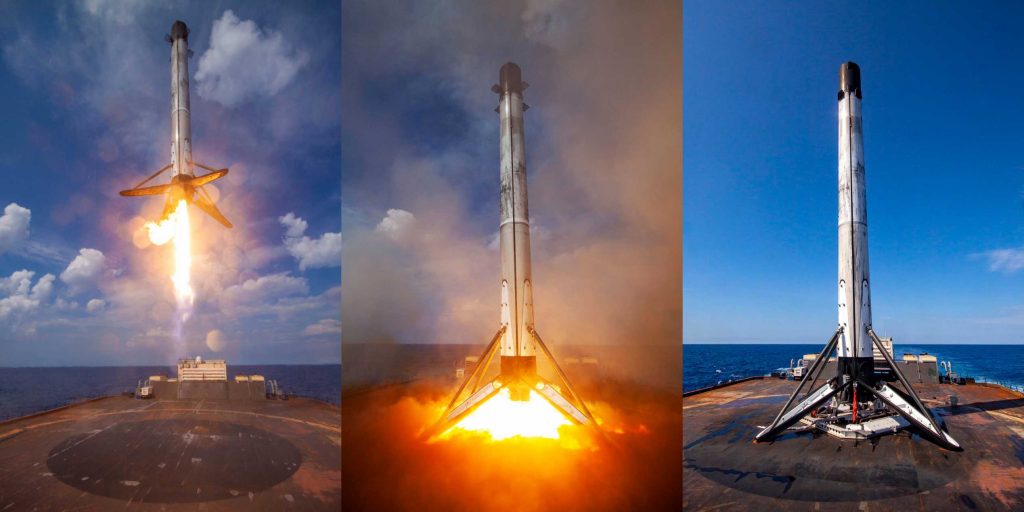
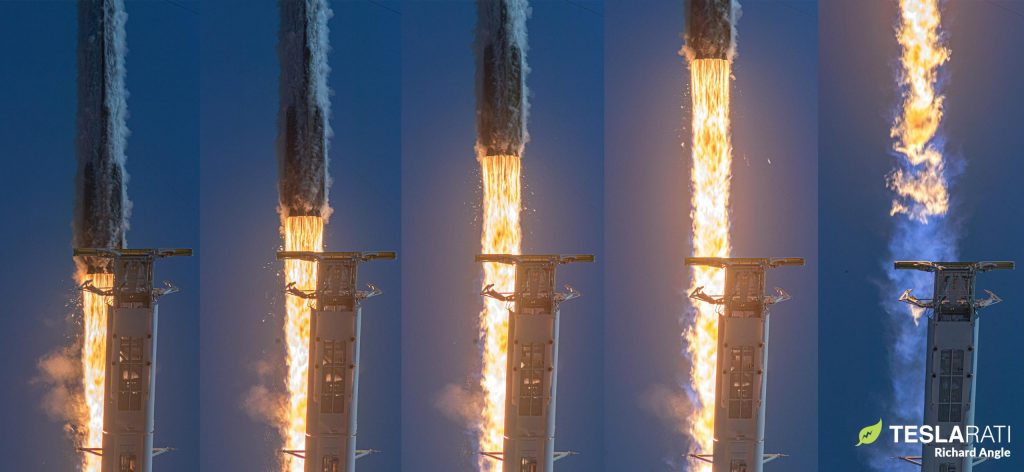
Conditions on October 22nd have a 50% chance of violating Falcon 9 weather constraints, necessitating a delay due to the instantaneous window used for Starlink launches. Forecasts for a backup window on October 23rd show a slightly better 40% chance of weather violation. As usual, SpaceX will host an official launch webcast beginning around 15 minutes before liftoff – noon EDT (16:00 UTC). Tune in below.

Elon Musk
Elon Musk just said some crazy stuff about the Tesla Roadster

Elon Musk appeared on the Moonshots podcast with Peter Diamandis today to discuss AGI, U.S. vs. China, Tesla, and some other interesting topics, but there was some discussion about the upcoming unveiling of the Roadster, the company’s electric supercar that will arrive several years after it was initially slated for release.
Musk made some pretty amazing claims about the Roadster; we already know it is supposed to be lightning-fast and could even hover, if Tesla gets everything to happen the way it wants to. However, the car has some pretty crazy capabilities, some of which have not even been revealed.
On the podcast, Musk said:
“This is not a…safety is not the main goal. If you buy a Ferrari, safety is not the number one goal. I say, if safety is your number one goal, do not buy the Roadster…We’ll aspire not to kill anyone in this car. It’ll be the best of the last of the human-driven cars. The best of the last.”
🚨 Elon on the Roadster unveiling, scheduled for April 1:
— TESLARATI (@Teslarati) January 6, 2026
Musk makes a good point: people who buy expensive sports cars with ridiculous top speeds and acceleration rates do not buy them to be safe. They hope they are safe in case of an emergency or crash, but safety is not at the forefront of their thoughts, because nobody buys a car thinking they’ll crash it.
The Roadster is truly going to push the limits and capabilities of passenger vehicles; there’s no doubt about that. Tesla plans to show off the new version car for the first time on April 1, and Musk has only hinted at what is possible with it.
Musk said back in November:
“Whether it’s good or bad, it will be unforgettable. My friend Peter Thiel once reflected that the future was supposed to have flying cars, but we don’t have flying cars. I think if Peter wants a flying car, he should be able to buy one…I think it has a shot at being the most memorable product unveiling ever. [It will be unveiled] hopefully before the end of the year. You know, we need to make sure that it works. This is some crazy technology in this car. Let’s just put it this way: if you took all the James Bond cars and combined them, it’s crazier than that.”
Production is set to begin between 12 and 18 months after the unveiling, which would put the car out sometime in 2027. Hopefully, Tesla is able to stay on track with the scheduling of the Roadster; many people have been waiting a long time for it.
News
Tesla launches hiring for Robotaxi program in its twentieth country
Overall, the hiring signals Tesla’s aggressive timeline for global dominance in autonomous mobility.

Tesla has launched a hiring initiative for its Robotaxi program in its twentieth country, as the company posted two new jobs in Thailand this week.
Tesla is hiring in Bangkok and Kowloon for the Vehicle Operator position, which is related to data collection, and is the first in Thailand, but the twentieth country overall, as the company tries to expand into other markets.
🚨 BREAKING: Tesla is hiring additional full-time Vehicle Operators in Bangkok, Thailand.
Previous openings were 6-month, part-time roles. These are equivalent to AI Safety Operator roles in the U.S. pic.twitter.com/R6LzoU1bos— Tesla Yoda (@teslayoda) January 5, 2026
Tesla has had active job postings for Vehicle Operator positions in the United States, India, Israel, Taiwan, Germany, the Czech Republic, Hungary, the UK, Finland, Switzerland, Sweden, the Netherlands, Austria, Spain, Norway, Italy, and Turkey in past listings.
These postings are not all currently available, likely because the roles have been filled.
Thailand is the most recent, and broadens the company’s potential path to expanding its ride-hailing program, which is only active in the United States in Austin, Texas, and the California Bay Area, so far.
These roles typically involve data collection, which assists in improving Autopilot and Full Self-Driving operation. Tesla’s self-driving programs utilize real-world data that is accumulated and stored, observing vehicle and traffic behavior, as well as tendencies that are performed by human drivers to help increase safety and overall performance.
Overall, the hiring signals Tesla’s aggressive timeline for global dominance in autonomous mobility. Although the company has several high-profile rivals and competitors in the field, it has established itself as a main player and a leader in the development of autonomous technology, especially in the U.S., as its FSD suite is refined on almost a weekly basis.
The Full Self-Driving suite is available in seven countries and territories currently, including the U.S., Canada, China, Mexico, Puerto Rico, Australia, and New Zealand. Its biggest goal for expansion is currently the European market, where regulatory hurdles have been the main bottleneck prolonging its launch on the continent.
Tesla has performed months of testing in various European countries, including France and Spain, and does have support in some areas from various regulatory agencies. However, the company is hoping to get through this red tape and offer its suite in Europe for the first time, hopefully this year.
News
Tesla China rolls out Model Y upgrades, launches low-interest financing
These strategies are aimed at improving the ownership experience and keeping vehicle pricing competitive in the world’s largest electric vehicle market.

Tesla has rolled out minor updates to the five-seat Model Y in China, upgrading the vehicle’s center display to a higher-resolution 16-inch 2K screen. The electric vehicle maker also introduced attractive financing options, including 7-year low-interest rates, to offset the new purchase tax on EVs.
These strategies are aimed at improving the ownership experience and keeping vehicle pricing competitive in the world’s largest electric vehicle market.
Five-seat Model Y gets larger, better display
With its recent update, all three variants of the five-seat Model Y now feature an upgraded 16-inch 2K resolution center display, which replaces the vehicle’s previous 15.4-inch 1080p panel. This screen was already used in the six-seat Model Y L, and it offered improved visual clarity. Tesla China has also updated the Model Y’s headliner to black, giving the vehicle a sleeker appearance.
Prices of the five-seat Model Y remain unchanged at RMB 263,500, RMB 288,500, and RMB 313,500 for the respective trims. This update enhances the cabin experience as domestic rivals are already adopting high-resolution screens. As noted in a CNEV Post report, some domestic automakers have begun rolling out vehicles equipped with 3K-resolution displays.
New financing offers
Tesla also launched ultra-long-term financing offers for its locally produced models in China, which include the Model 3 sedan, the five-seat Model Y, and the six-seat Model Y L, through January 31, 2026. The 7-year option features an annualized fee rate as low as 0.5%, which is equivalent to 0.98% interest. This is expected to save customers up to RMB 33,479 ($4,790) compared to standard rates.
A 5-year zero-interest plan is also available, and it has been extended to the Tesla Model Y L for the first time. These incentives help offset China’s new 5% purchase tax on New Energy Vehicles (NEVs) in 2026-2027. Some of Tesla’s rivals in China have announced in recent months that they would be covering the purchase tax owed by buyers early this year.








